Track cycling at the Paris Olympics: A complete guide
A guide to the track cycling events at the Paris Olympics

After the time trial and road cycling at the Olympics, track cycling comes to the fore, with a week of competition in Paris from Monday 5 August to Sunday 11 August.
Over the course of the week, six men's and six women's gold medals are in contention across six events and multiple rounds.
The UK has always done well in Olympic track cycling, but there's increasing competition, assisted by an arms race in track bike design. The Hope-Lotus track bike ridden by Team GB is still considered leading edge, but other nations are catching up and the Japanese V-Izu TCM-2 track bike is headline-grabbing for its €126,555 price tag.
But what are the six track cycling competitions at the Olympics? Here is a brief guide to each event, with a lot more detail via links to our pages for each Olympic track cycling event.
Below that you'll find the answers to almost every question you might have about track cycling in our Frequently Asked Questions section.
Team pursuit
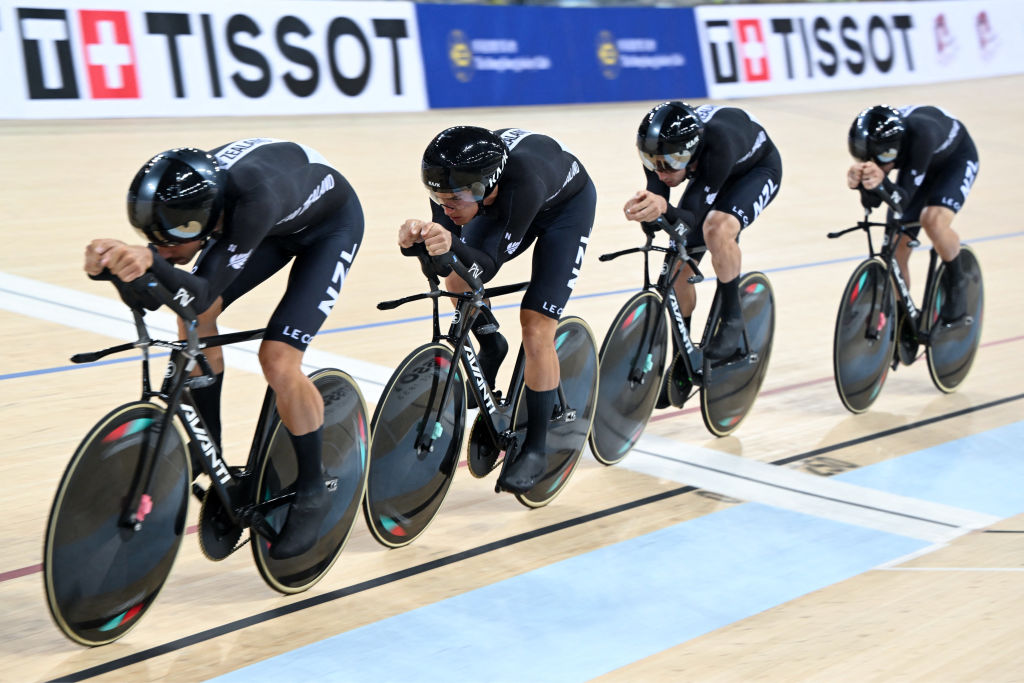
Considered an endurance event (as opposed to a sprint), despite taking only around four minutes, the team pursuit consists of four riders riding 4,000m, or 16 laps of the track, with two teams starting at opposite sides of the track in all but the first round.
The team pursuit requires precision for the riders to keep close to each other to slipstream the lead rider, who will peel off up the banking and take their place at the rear of the train. Riders take in turns on the front to maximise the speed of the team as a whole.
The latest race content, interviews, features, reviews and expert buying guides, direct to your inbox!
There are three rounds to the competition. Early rounds are against the clock, and in the knockout rounds, two teams race on opposite sides of the track. The time is taken for the third rider in the team, so teams will often have one rider spend more time on the front in the opening section before peeling off.
Read what is the team pursuit for more details.
Team sprint
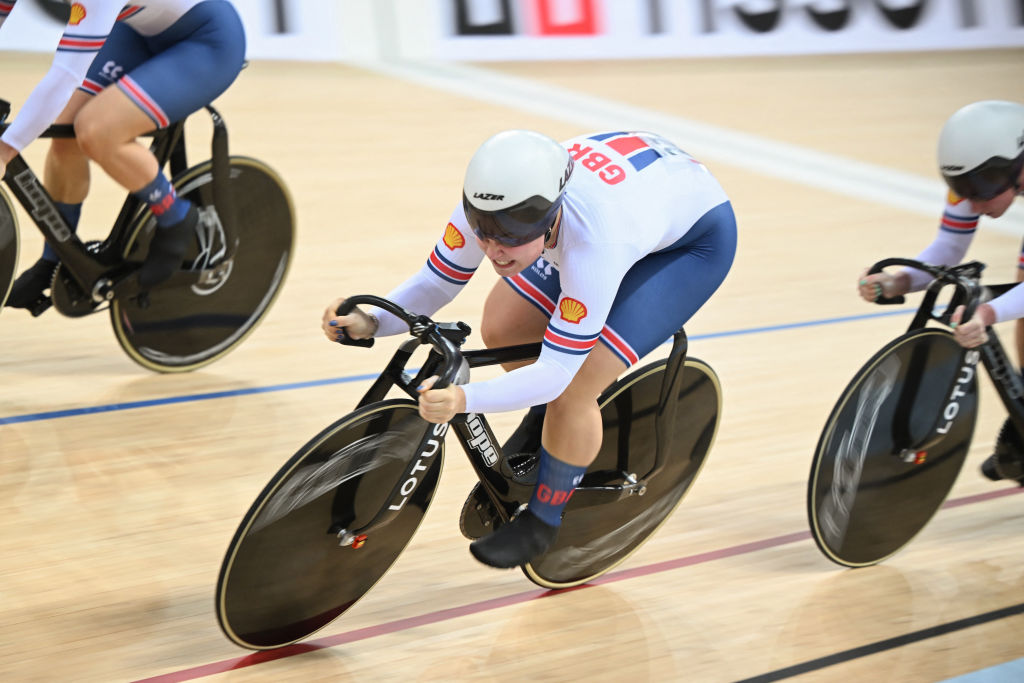
The team sprint is a timed race over a set number of laps of the velodrome. Women would previously race as a team of two over 2km, while men would race as threes over 3km. However, for the first time, Paris will see parity between men and women, meaning both will race in teams of three over 3km.
There's a standing start, and each rider in the team will do a full lap on the front of the train before peeling off. The final rider in the train will cover two laps (women) and three laps (men) before crossing the line to finish.
The fastest team to get their final rider across the finish line is the winner.
The race takes place over three rounds. Early rounds are against the clock, while the knockout stages see two teams starting on opposite sides of the track.
Read what is the team sprint for more details.
Individual sprint
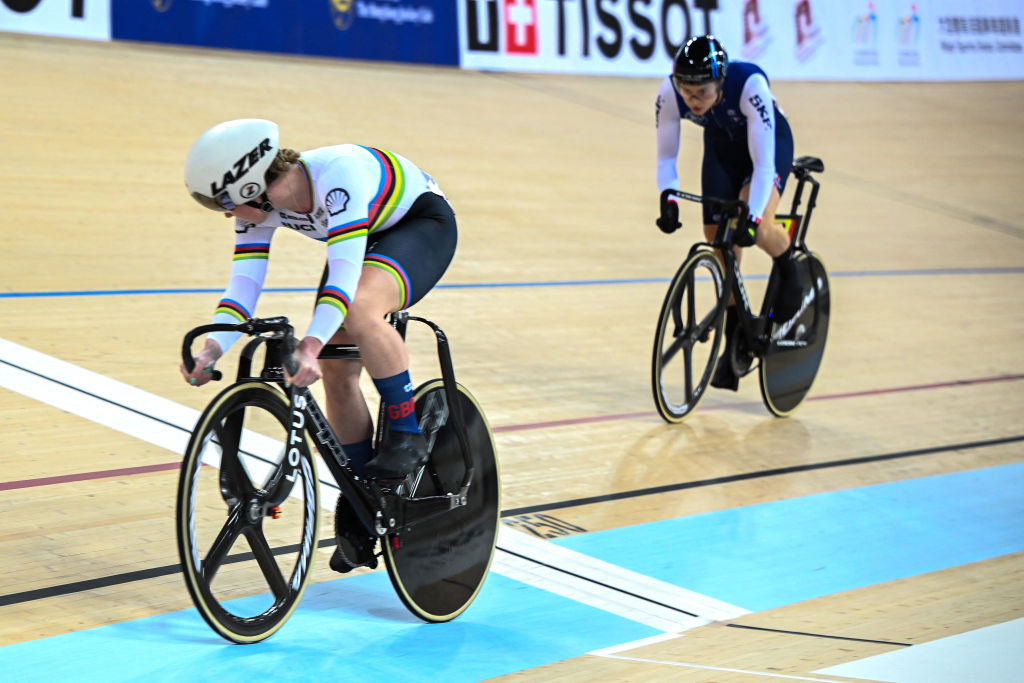
The individual sprint is marked by the stand-off between riders, as they slowly lap the track or trackstand, trying to force the other to move first.
But before this, there's a qualifying round with a flying start, with two-and-a-half laps build-up and times then taken over 200m. It's then that the tactical competition begins, with a series of rounds and heats to narrow down the final show-off for the gold and silver medals, where it's first across the line who takes home the glory.
Read what is the individual sprint for more details.
Keirin
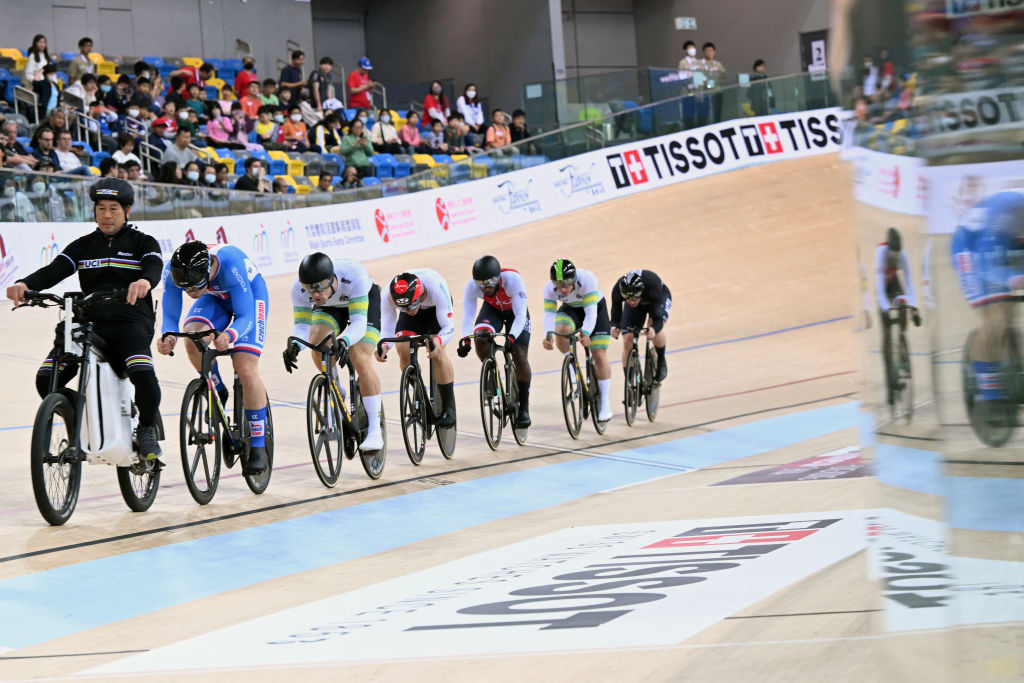
The keirin is another event that many people will recognise, in this case for the motor-pacing, where a rider on a petrol-driven or electric bike, called a derny, leads the riders before peeling off.
Riders draw lots to see where they will be positioned and the derny paces them up to 50km/h over three laps. Once the derny has left, there are three raced laps, with a series of rounds to determine the medallists.
Read what is the keirin for more details.
Omnium

The omnium is a collection of four different events, all held on the same day.
The first event is the scratch race, with a first-past-the-post race over 10km for men and 7.5km for women.
That's followed by the tempo race, where points are awarded for sprints and for lapping the field. After four laps, there's a sprint every lap, but making a breakaway and lapping the field will garner many more points than winning a sprint.
Next is the elimination race, with a sprint taking place every other lap, and the last rider eliminated each time.
Finally, the points race is over 100 laps (25km) for men and 80 laps (20km) for women. There's a sprint every 10 laps and, as with the tempo race, there's a large benefit from lapping the field.
Read what is the omnium for more details.
Madison
https://www.gettyimages.co.uk/detail/news-photo/benjamin-thomas-of-team-france-sprints-during-the-mens-news-photo/1332821181?adppopup=true
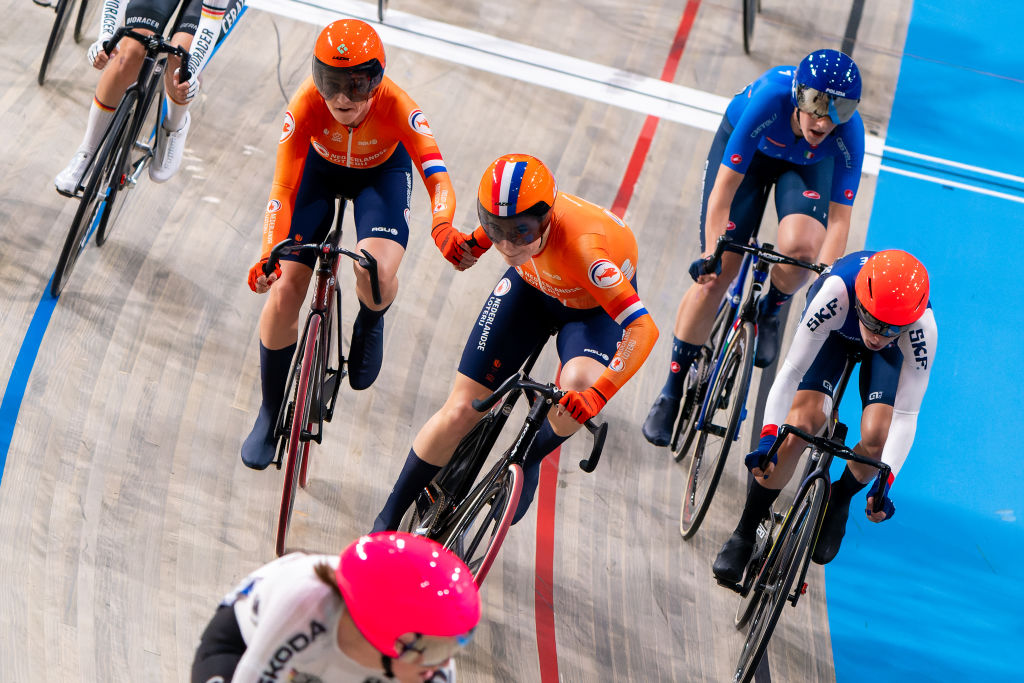
The final Olympic track cycling event is the madison. It's a mass-start event with 16 teams of two on the track at a time and relies on points to determine the winner. Points are accrued via sprints throughout the race and by lapping the field. The men's race takes place over 200 laps (50km), while the women race over 120 laps (30km).
Only one of the two riders will be active at any time, the other must remain above the blue 'stayer' line until a handover using a handsling to pull the second rider back into competition. It's up to the team to decide the timing of its handover.
Read what is the madison for more details.
Track cycling FAQs
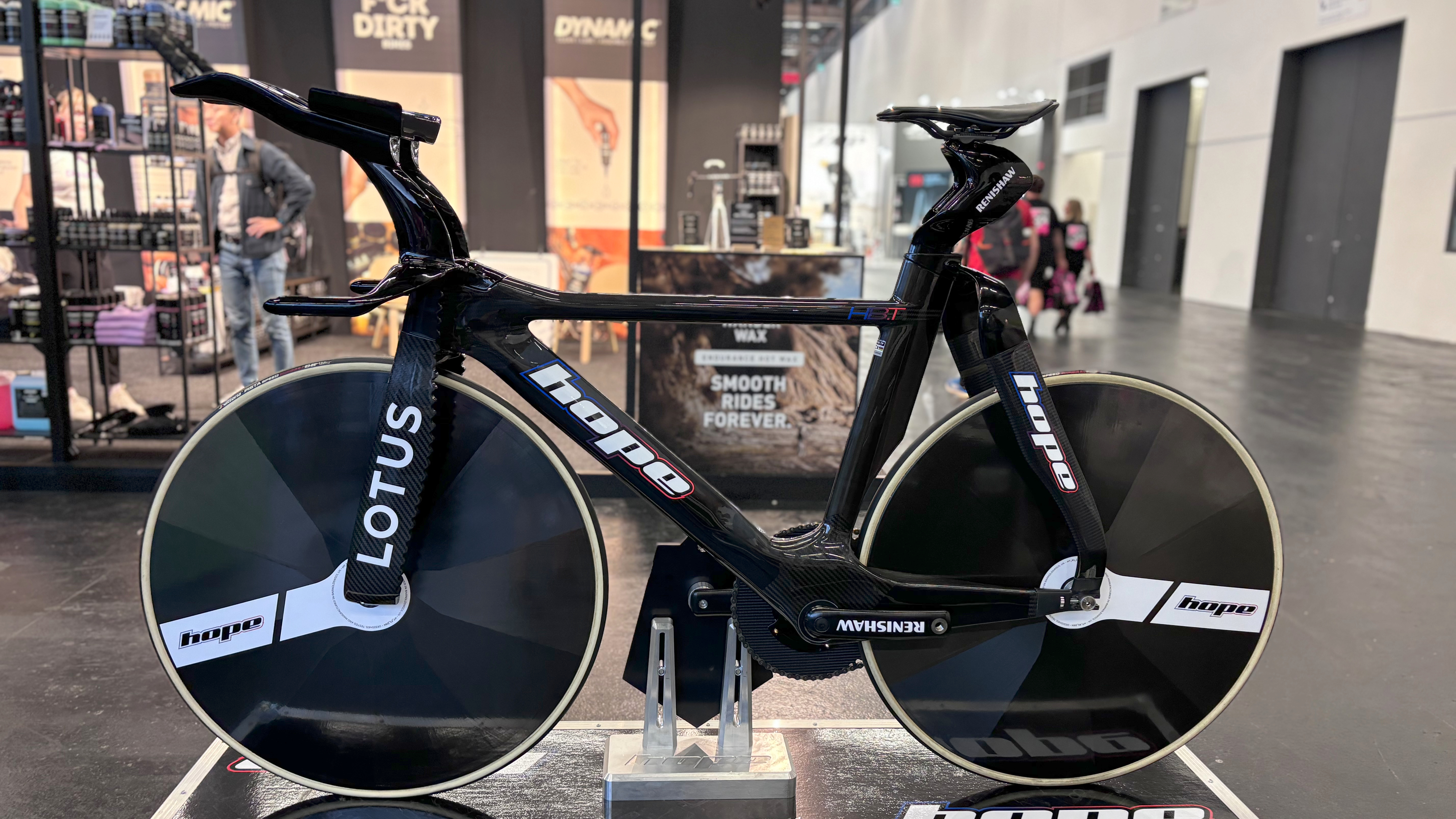
Why can’t track cyclists stop pedalling?
Track cyclists ride on a fixed gear bike, which doesn't have a freewheel in the rear hub. Instead, the single sprocket at the rear is attached directly to the rear wheel. This allows good power transfer for explosive acceleration, but means that the rider must pedal while the bike is moving. It also means that braking is via the rider's legs rather than having a mechanical brake.
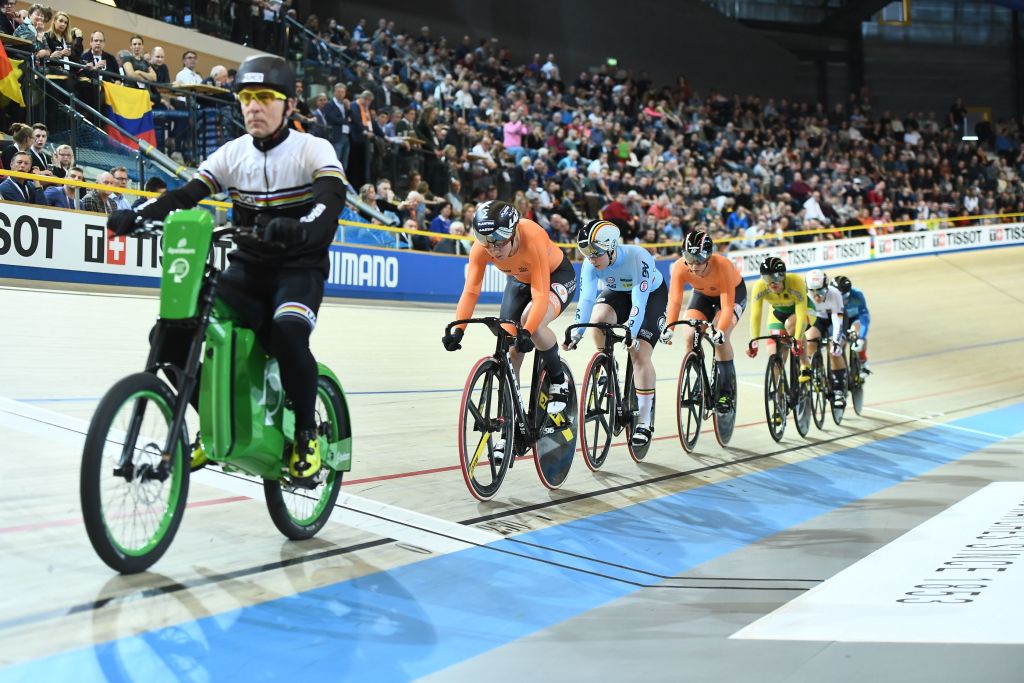
What is a derny bike?
A derny is a motor-powered bike. Riders ride behind the derny in the first few laps of the keirin event as they gather speed. The derny then peels off and the riders compete against each other.
Dernys used to be powered by a small petrol motor with a fuel tank over the front wheel, but modern dernys are increasingly powered by an electric motor. The derny rider will sit upright to help lower wind resistance for the riders behind.
They can travel up to 90km/h, but races rarely exceed 80km/h.
What is a tubular tyre?
A tubular tyre is formed as a continuous roll of casing fabric, like a circular sausage, with the inside edges of the tyre sewn together. There's an inner tube enclosed in the casing. The tyre is glued to the wheel rim, which has a shallow dish rather than the more standard clincher wheel's raised rims.
Tubular tyres used to be popular with road racing cyclists, but they've largely been replaced by tubeless clinchers. They're still used on the track due to their ability to hold high pressures, but some nations have begun using tubeless tyres and inner tubes on the track too.
What pressure do track bike tyres run?
While on roads, wider tyres at lower pressures are faster, a narrow tyre at high pressure is still faster on a track due to the smooth surface. Thus track bike tyres are typically run at over 100psi, in some cases up to 200psi.
What is a disc wheel?
A disc wheel is a wheel which has enclosed sides, rather than using spokes. It's often used as a rear wheel for time trial bikes, due to its aerodynamic qualities, although disc wheels are in general heavier than spoked wheels, as well as more expensive. It's rare for cyclists to use a disc wheel at the front because wind catching it can make it more difficult to steer safely, but Wout van Aert did use one in the time trial in Paris.
Indoors, where wind isn't an issue, disc wheels are more commonly used at the front as well as at the rear.
What is a trispoke wheel?
A trispoke wheel has three wide carbon spokes between its rim and hub. It's more manoeuvrable than a disc wheel, but more aero than a spoked wheel and typically used as the front wheel of a track bike.
Not all track bikes are equipped with front wheels with three spokes; wheels with four or more spokes are also often used.
How fast do track cyclists go?
Track cyclists can achieve peak speeds in sprint and team pursuit events of around 80km/h. The men's world record for the team pursuit is 3:42.032, which is an average of almost 65km/h (40.3mph) from a standing start.
Why don’t track bikes have brakes?
Since they are fixed-gear bikes, riders of track bikes can decelerate just by lowering their pedalling cadence, so there's no need for brakes. The track is flat and there are no obstacles to prevent a controlled slowing down without braking.
Can Olympic track cyclists win the Tour de France?
Track cycling and road racing are very different events, requiring different rider capabilities. The Tour de France takes place over 3,000km-plus over 21 days of racing.
In contrast, track events are all under 100km, most significantly so, and some are as short as 200 metres. They're on the flat too, so a rider doesn't need to be good at climbing, unlike Tour de France winners. Track cyclists tend to be powerfully built and good at anaerobic exercise, whereas Tour de France winners are lean and have high aerobic capacity.
There is occasionally some crossover between road and track cyclists though. Filippo Ganna is an Italian road cyclist who races time trials, has raced the Tour de France, and will compete in the Team Pursuit in Paris. He will almost certainly never win the Tour de France though, as his skill is in races against the clock, not racing up mountains.
However, Bradley Wiggins and Geraint Thomas, both Team GB athletes in recent years on the track, have won the Tour de France. Both raced on the track to great success before refocussing on the road. Wiggins had a four-year gap, winning his last Olympic track medal in 2008 and the Tour de France in 2012. Thomas's gap was six years, winning in 2012 on the track and 2018 in France.
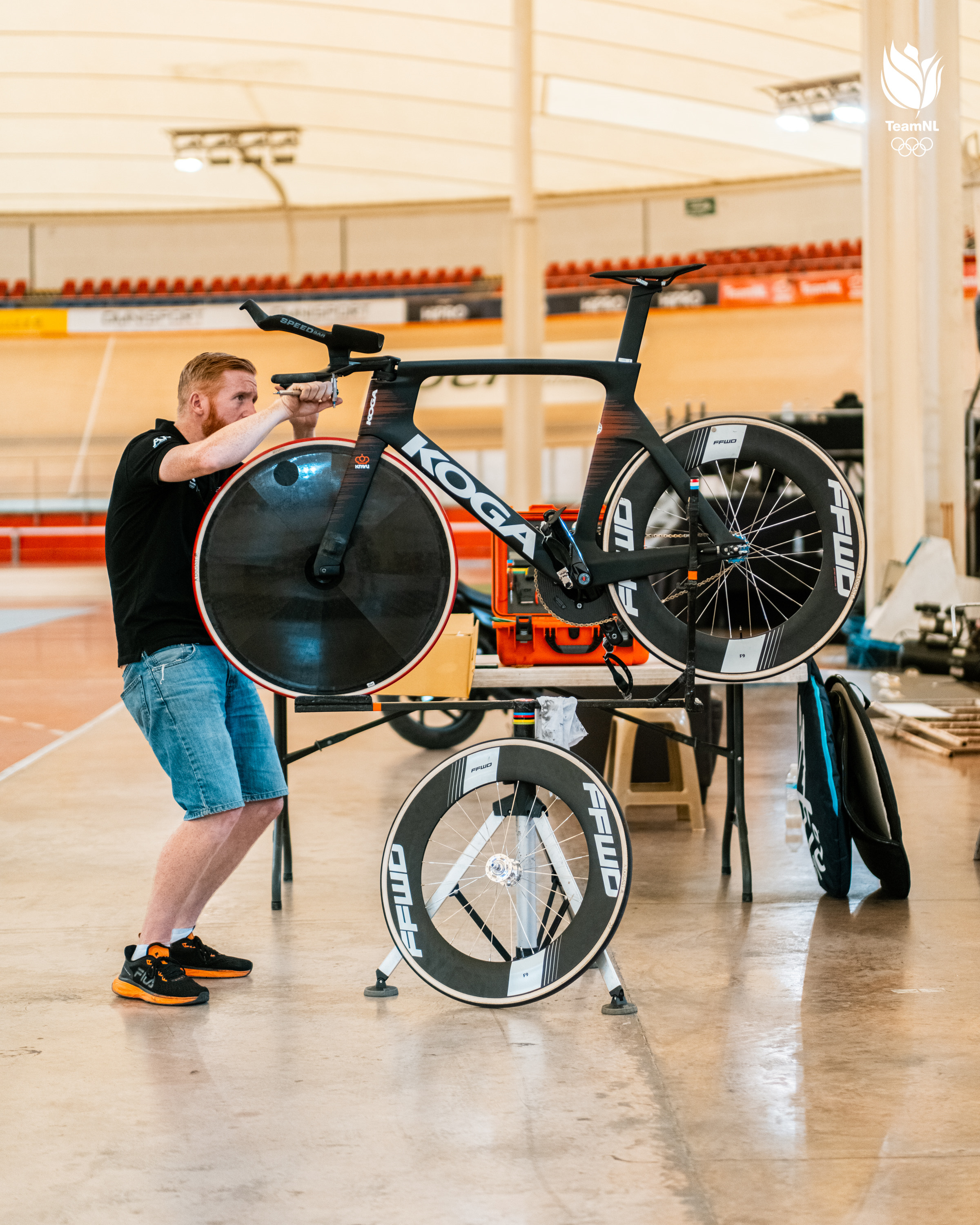
How much does an Olympic track bike cost?
Despite their mechanical simplicity, Olympic track bikes are very expensive. That's due to the substantial R&D that goes into developing a top-fight track bike and the small market for Olympic-level track bikes. There's a constant arms race to make Olympic track bikes more aerodynamic and better performing.
The Team GB Hope-Lotus track bike frameset alone costs around £25,000, depending on the spec. The most expensive track bike is currently the Japanese V-Izu TCM-2, which costs over £100,000 if you tried to buy one. Most track riders have their bikes supplied by their national teams, so they're not paying for them.
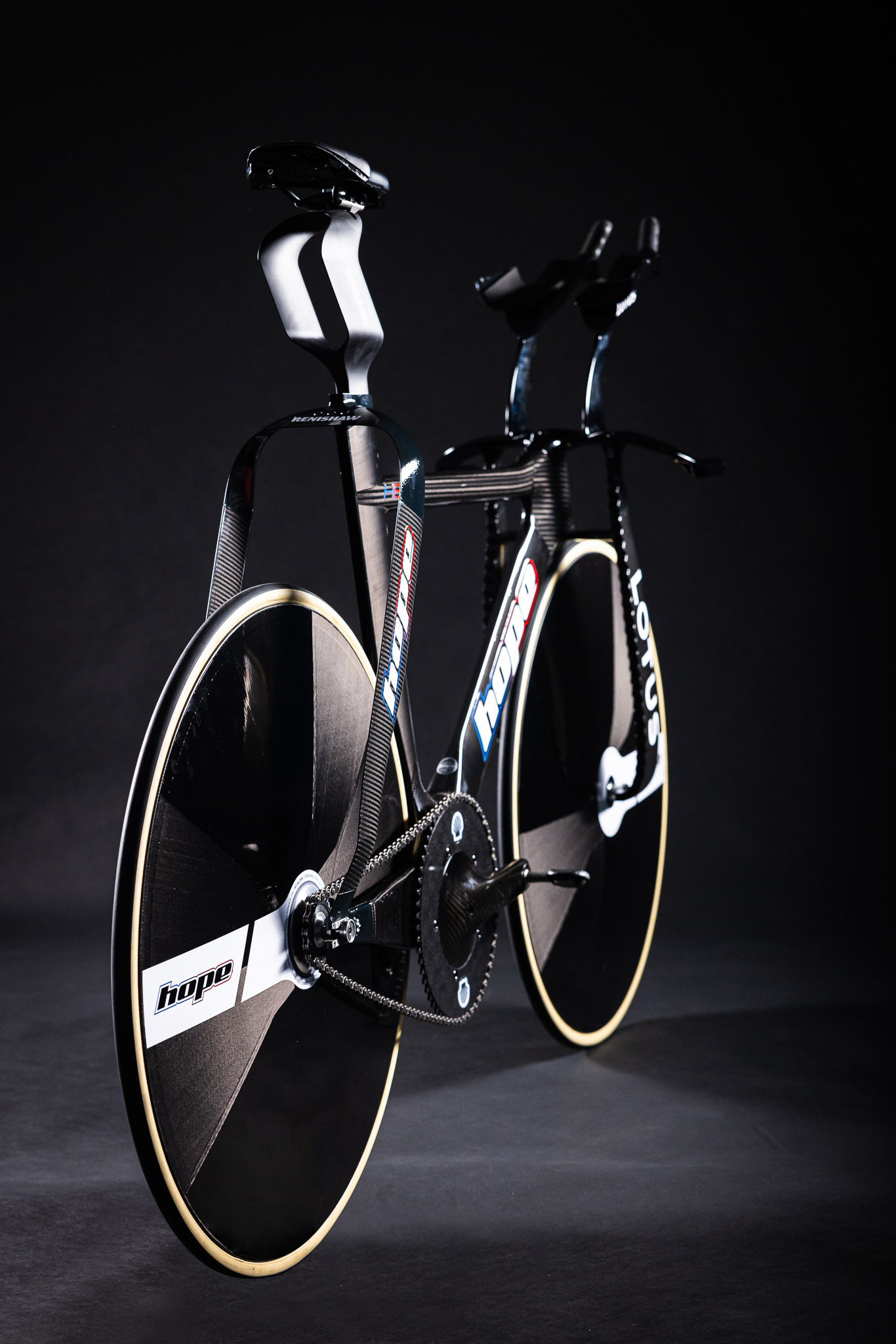
Why do track bikes look funny? Why are they so wide?
It's only recently that track bikes have become wide, with the Hope-Lotus bike the forerunner. Previously, they were very narrow, but Team GB's research showed that the frame was more aerodynamic if the fork blades and seatstays were kept away from the turbulent air caused by the wheel and instead placed in line with the rider's legs. It's a trend since adopted by other countries for their track bikes.
There are other odd-looking aerodynamic features, such as the double seatpost on the French team's Look P24.
Some track bikes have their drivetrains on the left, rather than the right side of the bike. Pioneered by the US team at the Rio games, the thinking is that since track bikes always turn to the left, the left side gearing is more sheltered by the front wheel and so more aerodynamic.
Why don’t track bikes have gears?
Since they're ridden on the flat, there's no need for lower ratios to tackle hills. Track riders train to deliver power efficiently at a range of cadences. Many track events only involve competition once the rider is moving, so there's little need for a low gear to get started either.
What is drafting?
Drafting occurs where a following rider rides close enough to the rider in front to benefit from their slipstream, thus saving a lot of energy - estimates range up to 50%.
It's a common tactic in all cycling, but particularly in track events such as the team pursuit, where riders will train to ride very close behind each other to maximise the aerodynamic gain.
Why do some bikes have extra handlebars?
Bikes designed for pursuit events, where riders keep up high speeds for longer distances, will be equipped with bar extensions. Once they've accelerated, when they'll use the wider bars, riders will use the extensions. These keep them low and tucked on the bike, for optimum aerodynamics.
Bikes used for sprints don't have extensions, since riders are putting in high effort for a shorter distance and so need to be able to pull against the handlebars, rather than getting tucked.
What is a handsling?
A handsling is where one rider grabs another's hand behind them and pulls them forward. It's a feature of the Madison event, where pairs of riders hand over racing between them, and allows the lead rider to impart their momentum to the follower, making for a faster handover.
What are the ridges on Olympic cyclists' kit for?
Aerodynamics in track cycling extends from the design of bikes to the clothing worn. It's been found that ridged fabrics can be more aerodynamic than smooth ones.
Ridges and sawtooth trailing edges now extend to track bike frames too, in pursuit of optimum aerodynamics.
What is a track stand?
A track stand is where a rider keeps their bike stationary by balancing their bike without putting a foot down. They may keep their bike completely stationary or, since the bike gearing is fixed, rock it slightly backwards and forwards.
It's used in individual sprint races to try to gain an advantage over an opponent and force them to lead out so that the second rider can slipstream them once the sprint phase starts.
How steep is the Paris velodrome?
On a typical Olympic length 250m track, the banking will rise to around 42 degrees. It will be greater on a shorter track, and less on a longer track.
How heavy are Olympic track bikes?
As with all bikes used in competition, track bikes are subject to the UCI's 6.8kg minimum weight limit. Since they're mechanically simple and usually built of carbon fibre, many will weigh around this value.
Several nations are experimenting with 3D-printed metal track bike frames though, which may increase the weight somewhat.
How much power do track sprinters put out?
A lot. There's a video of German track cyclist Robert Förstemann generating enough power for over three minutes - around 700 watts - to toast a slice of bread. In his prime, Chris Hoy could put out 2,500 watts and 700Nm torque. A good benchmark for most male track sprinters is around 25 watts per kilo, and 20 watts per kilo for women.
How long is the Paris Velodrome?
The black line, on the Saint-Quentin-en-Yvelines Velodrome is measured at 250 metres (273.4 yards) long, as is Olympic standard.
The red line, which sits 90cm outward of the black line, is 5.7m longer for a full lap of the velodrome.
What do all the lines on the track mean?
On the very inside edge of the track is a flat section. Usually unboarded and made of concrete, it's used to get started.
Next is a light blue line, dubbed the 'Côte d'Azur', which indicates the inside edge of the track. 20cm above this is a black line, which denotes the length of the track and is followed as much as possible by riders to keep the distance they have to travel to a minimum.
At 90cm above the black line is a red line. Called the sprinter's line, it's used in sprint competitions. As long as a lead rider is between the black and red lines, another rider must pass above them. While being passed, the leader can't move above the red line and must stay within the two lines.
Finally, there's a blue line further up the track, which is used in the Madison. Every not-in-play rider from each pairing must remain above this so that they're not in the way of competing riders.
Is Lotus bike the same as Lotus cars?
Both are part of the same group. As with many performance motor sport brands, such as Red Bull and McLaren, Lotus Group includes an engineering consultancy, which developed the Hope-Lotus bike alongside British Cycling.
Hope Tech is a cycling brand primarily focused on mountain bikes and components, which is responsible for building the frameset.
Why do track cyclists wear visors and strange helmets
As with their bikes and clothing, aero is everything for track cyclists. An enclosed helmet with a long tail and a visor will be more aerodynamic than a standard vented road helmet.
Why do thunderstorms help with fast times?
When cycling, one of the biggest obstacles that cyclists have to overcome is the air. It's for this reason that aerodynamic bikes, helmets and clothing is so highly sought after, and riders often go to altitude for world record attempts.
The higher the air density, the more air they have to push out of the way, and that takes more power. Lower air density means there's less air to overcome, which requires less power, or equals faster speeds for an equivalent power.
After a thunderstorm, air pressure is significantly reduced, which means low air pressure, less resistance to overcome, in turn higher speeds, and therefore faster times!
What are the vest the track cyclists are wearing?
Inside the velodrome it is hot, and while riding body temperatures can rocket which has a detrimental impact on performance. In order to counteract this, riders will warm up while wearing vest filled with cooling gel. This loosens up the muscles while keeping core temperatures from getting too high.
Paul has been on two wheels since he was in his teens and he's spent much of the time since writing about bikes and the associated tech. He's a road cyclist at heart but his adventurous curiosity means Paul has been riding gravel since well before it was cool, adapting his cyclo-cross bike to ride all-day off-road epics and putting road kit to the ultimate test along the way. Paul has contributed to Cyclingnews' tech coverage for a few years, helping to maintain the freshness of our buying guides and deals content, as well as writing a number of our voucher code pages.